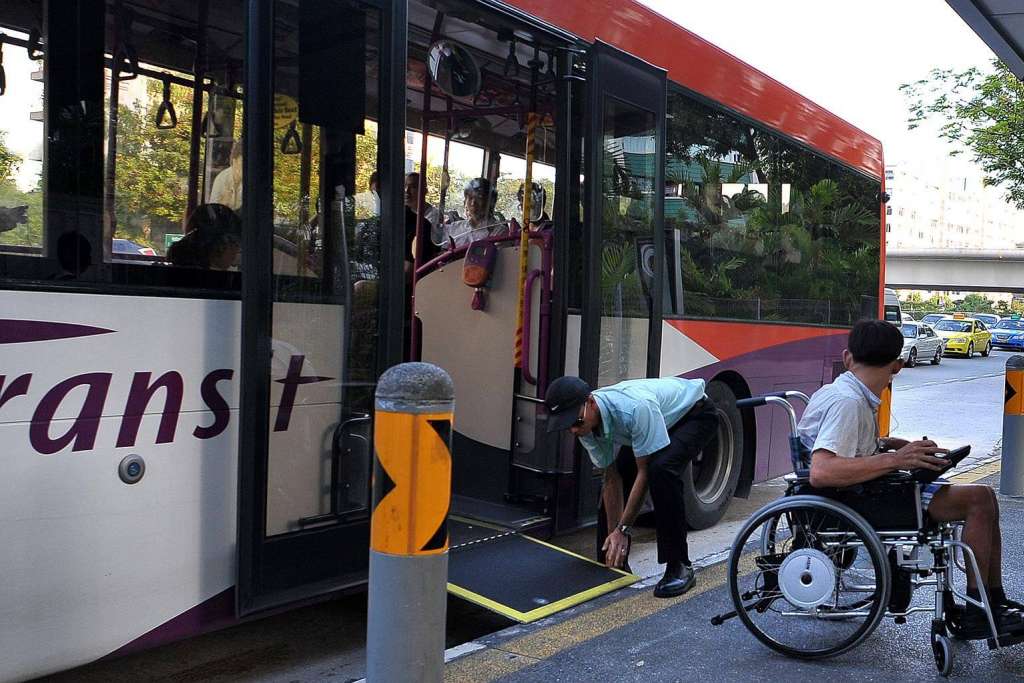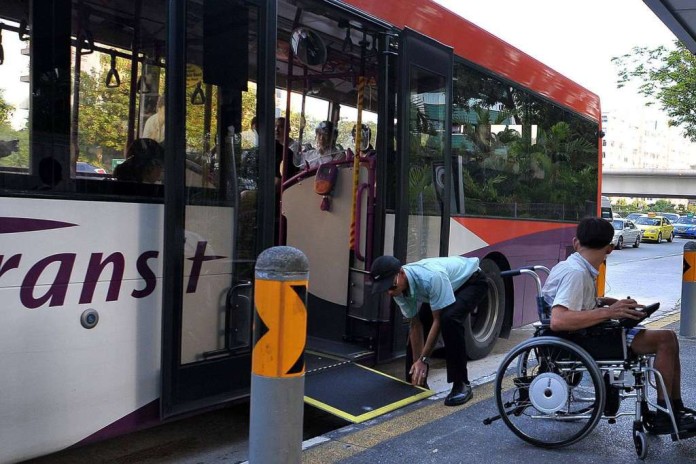Every five years, the Government releases a national blueprint to meet the needs of people with disabilities.
The first of these Enabling Masterplans ran from 2007 to 2011, the second from 2012 to this year, and the third will cover 2017 to 2021.
Each points out unmet needs and lays out the policies and services that should be developed.
How have the recommendations been implemented? How well have the needs of people with disabilities been met over the past decade?
Certainly, the Government has devoted more resources and finances with each masterplan.
Following the 2007 outline, the Government announced a doubling of the budget allocated to services for people with disabilities.
And in the second masterplan, the budget was increased to more than $1 billion to cater to a variety of needs, especially in the areas of transport and early intervention.
Public transport fare concessions were extended to people with disabilities in 2014.
Those who could not take buses and trains were given subsidies to take cabs.
It also became the norm for buses, buildings and common areas to be made wheelchair-friendly or barrier-free.
More resources were allocated to education too. To help children with special needs, subsidies for early intervention programmes were bumped up in 2014.
In that year, a $30 million Open Door Programme was also introduced to help people with disabilities train and look for jobs, and to defray employers’ costs in supporting them.
Last month, the Education Ministry announced compulsory education from 2019 for children with moderate to severe special needs in publicly funded schools.
Changes have also taken place at the macro level, with Singapore ratifying the United Nations Convention on the Rights of Persons with Disabilities in 2013.
It is inevitable that, in spite of all the changes, there are still gaps that need to be addressed.
First, children with special needs who receive therapy should receive assistance to attend pre-school.
For now, many children with more severe developmental difficulties do not attend pre-school because of the long waiting lists at the schools.
Parents also fear that the teachers are either not adequately trained or do not have the bandwidth to handle their children.
The United Nations Educational, Scientific and Cultural Organisation has urged countries to provide access to formal pre-school education for children with disabilities because it is a “powerful means of nurturing diverse abilities and overcoming disadvantages and inequalities”.
Next, people with disabilities need more help to secure jobs. Research has shown that those who are employed lead more fulfilling lives.
The significance of employment goes beyond simply being a means of earning a living.
Official data shows that only about one in 10 of those with disabilities is able to find work in the open market.
Stakeholders say those who are hired are often relegated to service-related, back-end jobs that keep the employees out of sight.
Thirdly, it is time to establish a Disability Office staffed by people from the relevant health, education, manpower and social service agencies.
The work is now split between different agencies and ministries.
The issues people with disabilities face cut across the different sectors. For instance, any attempt to place them in good jobs will involve several agencies.
This includes the Ministry of Manpower to rally the support of employers, the Ministry of Education to ensure people with disabilities are taught relevant vocational skills in school, and social workers to make sure those hired are coping well in the workplace.
Such a Disability Office could be parked with the Prime Minister’s Office under a coordinating minister, said MP Denise Phua, one of the 22 members in the committee that developed the latest masterplan.
Lastly, there should be no let-up in the push for a truly inclusive society.
While several large surveys have found that people support the idea of inclusion, opinions are not always translated into action.
There are still many who are uneasy about marrying a person with a disability, or even having special needs children sitting next to able-bodied children in class.
To make any change lasting, sustainable and useful for those who need it most, there cannot be a let-up in the will to translate each Enabling Masterplan into action.
If we still view those with disabilities as a separate community, and see the plans as something that concerns Them rather than Us, we are denying a group of people their personhood and right to participate in society.
Singapore is one of the most rapidly ageing societies in the world.
The number of those with acquired disabilities due to accidents, illness and old age will rise.
Be it paralysis from a stroke or the loss of basic functions due to dementia, the range of people suffering disabilities will be far wider than those born with physical or mental impairments.
About 2.1 per cent of the student population here – or 9,660 young people below the age of 18 – have disabilities.
When it comes to people aged 50 and above, the figure rises to 13.3 per cent.
Given Singapore’s ageing population, many of its citizens will one day have disabilities.
Key proposals
Some recommendations for the Government in the Enabling Masterplan:
•Introduce a standardised case management and care planning system, so people with disabilities can access services easily as they move through different life stages.
•Explore more opportunities for interaction between children in mainstream and special education schools, as well as such opportunities for children with and without disabilities at the pre-school level.
•Work with agencies such as Workforce Singapore and the Tripartite Alliance for Fair and Progressive Employment Practices to promote the hiring of people with disabilities.
•Set up a disability office to improve coordination across government agencies.
•Develop a central database of people with disabilities to facilitate planning of services.
•Continue educating the public on features such as parking spaces that are meant for people with disabilities so they will not be misused.
•Fit homes with technology to enable those with disabilities to live independently in the community.
Priscilla Goy

This article was first published on December 21, 2016.
Get a copy of The Straits Times or go to straitstimes.com for more stories.







